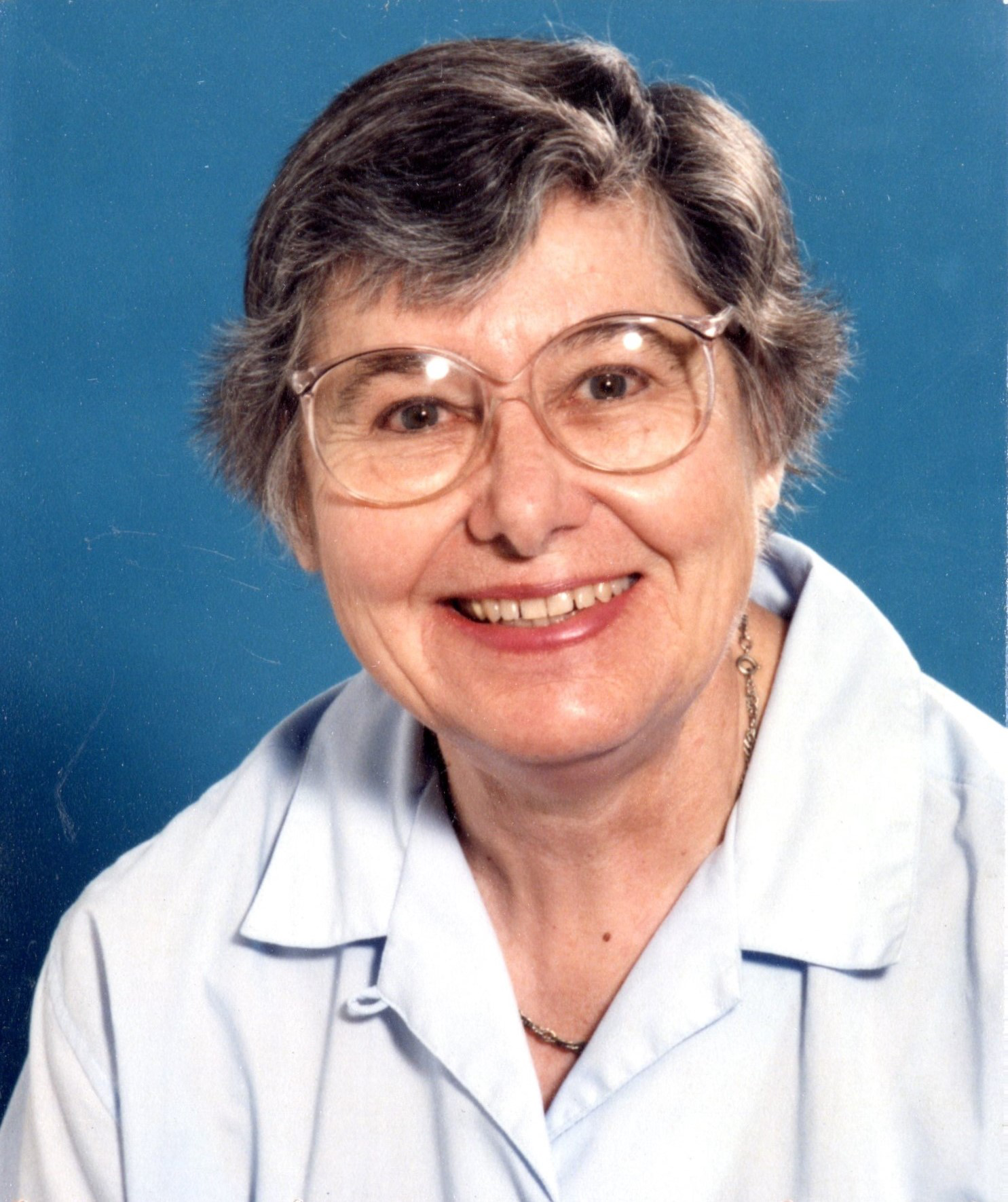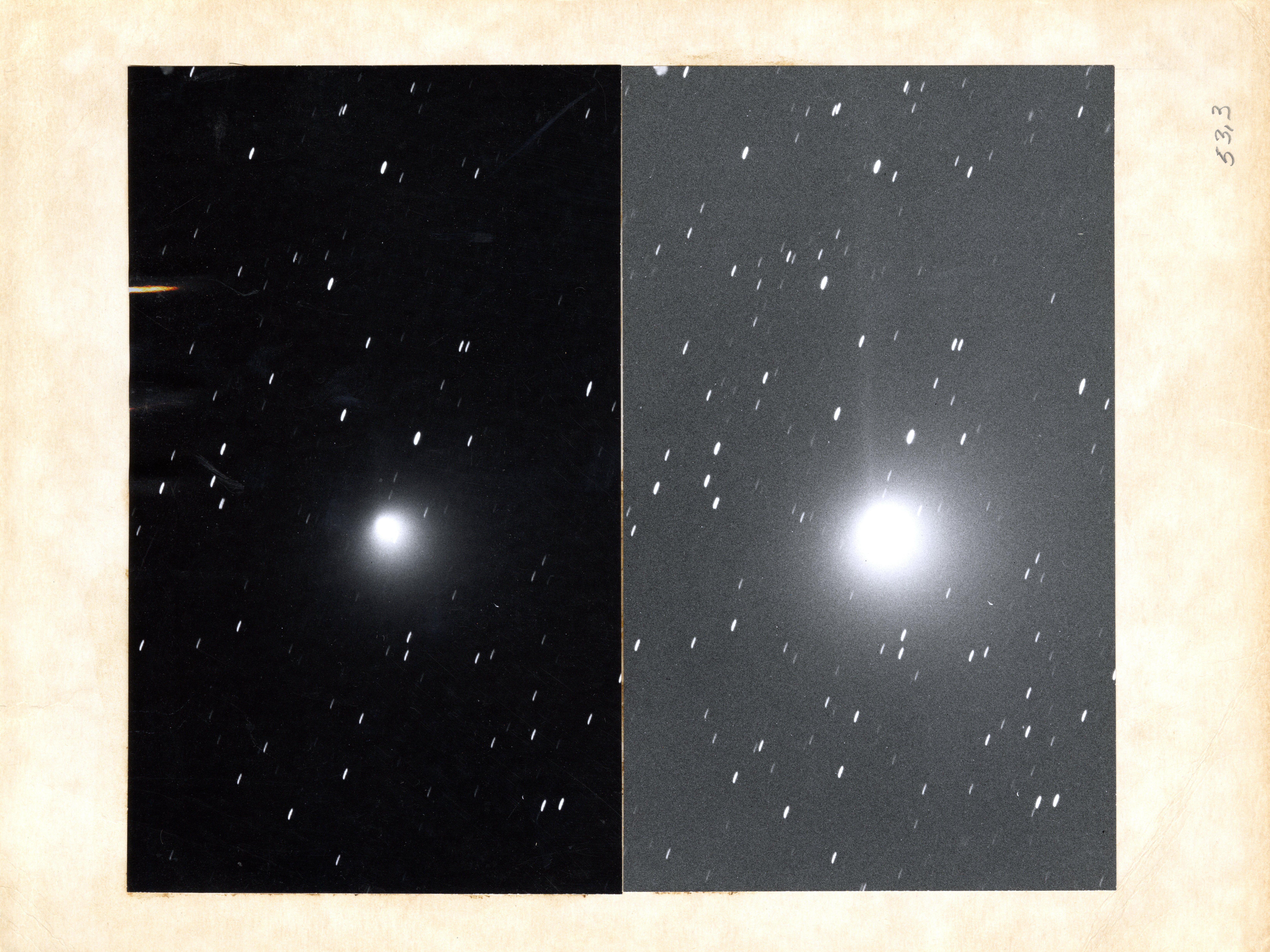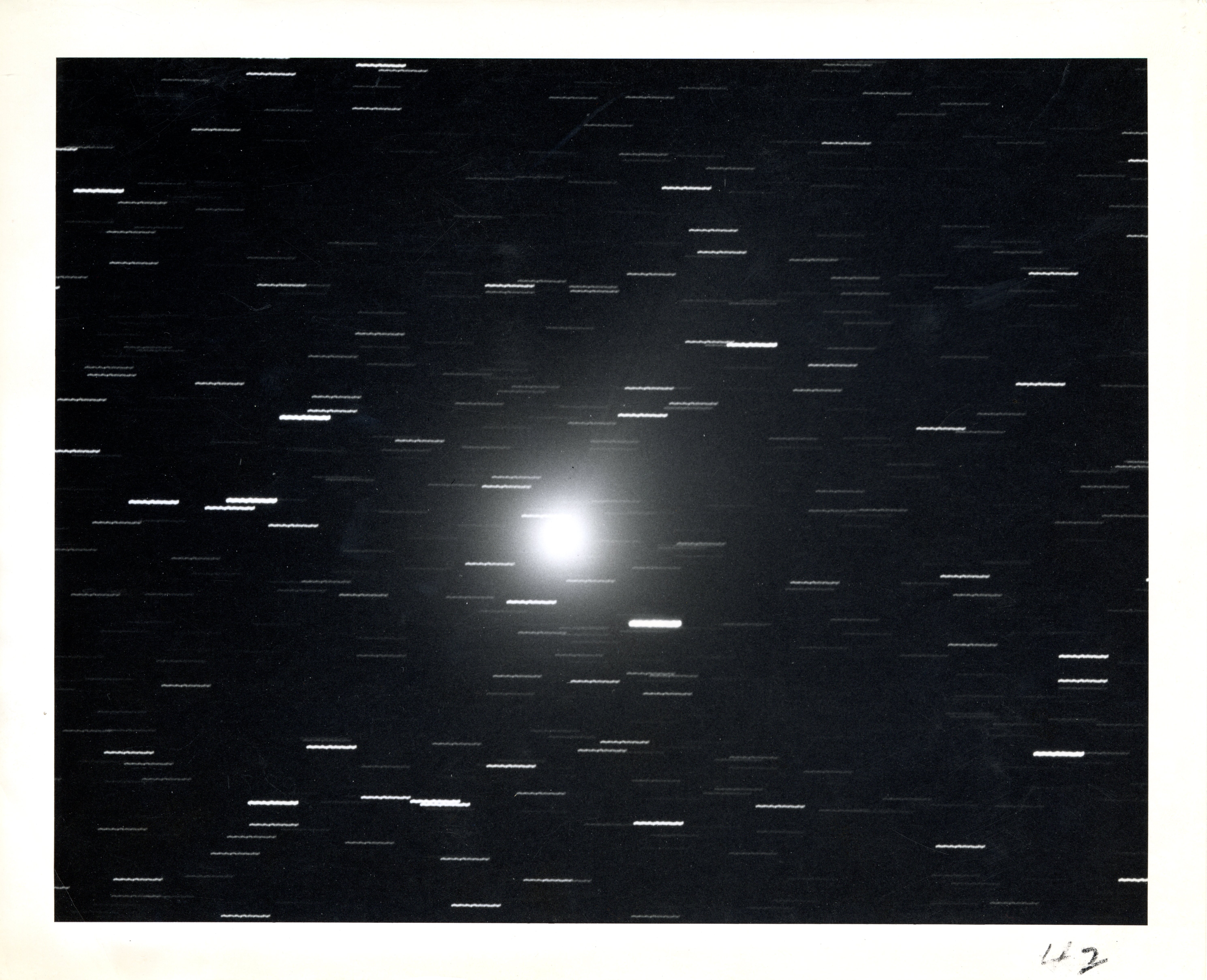This Month in Astronomical History: September 2023
Stephen Hussman University of Arizona
 Each month as part of this series from the AAS Historical Astronomy Division (HAD), an important discovery or memorable event in the history of astronomy will be highlighted. This month's author, Steven J. Hussman, writes about the work of Elizabeth ”Pat” Roemer. Interested in writing a short (500-word) column? Instructions along with previous history columns are available on the HAD web page.
Each month as part of this series from the AAS Historical Astronomy Division (HAD), an important discovery or memorable event in the history of astronomy will be highlighted. This month's author, Steven J. Hussman, writes about the work of Elizabeth ”Pat” Roemer. Interested in writing a short (500-word) column? Instructions along with previous history columns are available on the HAD web page.
Lost Comets Rediscovered: Dr. Elizabeth Roemer and The University of Arizona’s Lunar Planetary Laboratory
The Dr. Elizabeth Roemer Endowed Fellowship at the University of Arizona was established in October 2019 and formally announced in 2022. Dr. Elizabeth “Pat” Roemer (1929-2016), Professor Emerita of Astronomy and member of the Lunar and Planetary Laboratory, primarily focused her research on comets and asteroids, for which she calculated the return of 79 periodic comets.
Born in Oakland, California, and raised in nearby Alameda, Roemer was valedictorian of her 1946 high school class and winner of the prestigious Westinghouse Science Talent Search. As a Bertha Dolbeer Scholar, she obtained her BA in astronomy from the University of California, Berkeley, in 1950. Interestingly, while completing her graduate studies at Berkeley, she served as an instructor for adult extension classes in Oakland and as an assistant astronomer and lab technician at University of California's Lick Observatory. In 1955, she completed her PhD, and remained at the University of California, Berkeley, as an assistant astronomer, while also engaging in additional professional research at Yerkes Observatory, University of Chicago.
She accepted a position as an astronomer at the US Naval Observatory (NOFS) located near Flagstaff, Arizona, in 1957. It was at NOFS that she developed considerable skill in rediscovering comets by utilizing a high-definition 40-inch atmospheric reflecting telescope to locate, photograph, and analyze comets. As a result of her ground-breaking work, asteroid "1657 Roemera" (1961) was named in her honor. Roemer was named NOFS acting director in 1965. While enjoying her success at NOFS, she experiences blatant sexism and becomes a strong advocate for equality and equal pay for women in the sciences.
She joined the University of Arizona in Tucson, Arizona, as an Associate Professor in the Lunar and Planetary Laboratory in 1966 and achieved full professor status in 1969. In 1972, she served as committee chair responsible for creating UA's Department of Planetary Sciences. Beginning in 1980, Pat served both as a professor at the University of Arizona and as an astronomer at Tucson's Steward Observatory. Roemer specialized in the study of "astrometry" in which she completed precise measurements of the positions and movements of celestial bodies, which led to significant discoveries, such as asteroids "1930 Lucifer" (1964) and "1983 Bok" (1975). She was a co-discoverer with Charles T. Kowal of Themisto, Jupiter's moon XVIII.
Roemer retired in 1998 with emeritus status and continued her research on comets and asteroids. She served as president and vice president of the International Astronomical Union's Commission 6 (photometry and polarimetry) and vice president of its Commission 20 (Positions & Motions of Minor Planets, Comets & Satellites). She also served as chair of the American Astronomical Society's Division on Dynamical Astronomy. In addition to her leadership in the astronomy profession, she received numerous awards for her groundbreaking work such as the BA Gould Prize of the National Academy of Sciences, the NASA Special Award, and the Donohoe Lectureship of the Astronomical Society of the Pacific. At the University of Arizona, she served on a number of committees in order to facilitate and lead the efforts for equal pay and equity for women faculty.

Fig. 1: Faculty Portrait of Dr. Elizabeth Roemer. 1966. Dr. Elizabeth Roemer Papers (MS 664), University of Arizona Special Collections.

Fig. 2: Comet Encke. Lick Observatory, Mt. Hamilton, California, Circa 1961. Dr. Elizabeth Roemer Papers (MS 664), University of Arizona Special Collections.

Fig. 3: Comet Candy. US Naval Observatory, Flagstaff Station. Official US Navy Photograph. 13 January 1961. Dr. Elizabeth Roemer Papers (MS 664), University of Arizona Special Collections.
Further Reading:
- Dr. Elizabeth Roemer Papers (MS 664), The University of Arizona Libraries, Special Collections.
- Pioneers of Planetary Science (Chiefly comprised of scientists at the University of Arizona Lunar and Planetary Laboratory (LPL) and Steward Observatory.), The University of Arizona Libraries, Special Collections.
- Mooney, Madison. 2022. Who was Elizabeth Roemer? Lowell Observatory, Flagstaff, Arizona.

